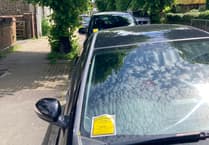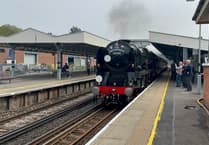MANY good reasons why Haslemere’s grade II listed signal box should be saved from closure have been put forward by resident railways expert Gareth David.
Writing in the Haslemere Society newsletter, the author of Railway Renaissance, highlighted the plight of the historic facility, which is now one of only three surviving signal boxes on the Waterloo to Portsmouth route.
The signal box also has the distinction of being the only one of the three along the route – the others are at Farncombe and Petersfield – to retain its complete and original 47-lever frame, controlling signals and points between Liphook and Witley.
Last year marked 81 years since Haslemere’s original semaphore signals were replaced by colour lights in 1937, to coincide with electrification of the Portsmouth Direct Line.
The signal box, which is one of Haslemere Station’s principal architectural features, is manned on a three-shift basis for 24 hours a day. It has been slated for closure, along with the signal boxes at Farncombe and Petersfield.
Mr David said: “For well over 50 years a process of progressively re-signalling Britain’s railway network has seen many thousands of signal boxes closed and replaced by larger signalling centres, a process which will eventually see Haslemere’s functions taken over by what is called a Railway Operating Centre at Basingstoke.
“The signal box on platform one at Haslemere was built by the London and South Western Railway (L&SWR) in 1895 and its lever frame also dates from the opening of the box.
While the days of using the levers to pull wires that operated mechanical (semaphore) signals and point rods are long gone, the highly polished levers are now pulled to operate motor-worked points and modern LED colour light signalling.
“The box gained its grade II Listing in September 2013, with the citation in support giving three principal reasons. Firstly, apart from the uPVC windows, which are sympathetic to the original design, the exterior is unaltered, while it retains its original Stevens Railway Signalling Co lever frame and associated block instruments.
“Secondly, it is a rarity, being the only remaining L&SWR Type 4 six-window bay design to survive and one of only two platform-mounted Type 4 signal boxes.
“Finally, there is what is known as group value, since it forms part of a group of un-designated station buildings that includes the booking hall (1858), waiting rooms and lattice-girder footbridge.
“Paying a visit to the box, courtesy of Network Rail’s local operations manager Jason Greenfield and signaller Christopher Vowles, I was fascinated to see how Victorian engineering was still being used to control a 21st-century railway. A total of 19 red and black painted levers remain in use, the remaining and disused white levers having once controlled points and signals in the goods yards that stood on each side of the railway.
“Communication with Farncombe and Petersfield boxes is predominantly by computer and automated train describer equipment, but the traditional bell telegraph instruments remain operational and are tested every day at 10am, for use in an emergency if and when modern technology fails, as happened a number of times during this summer’s heatwave.
“Haslemere signal box had been slated for closure in 2018, along with the signal boxes at Farncombe and Petersfield. However, as any commuter will know, things often move slowly on the railway network, and the latest guesses suggest that this trio will still be controlling our trains for a few more years yet.”




